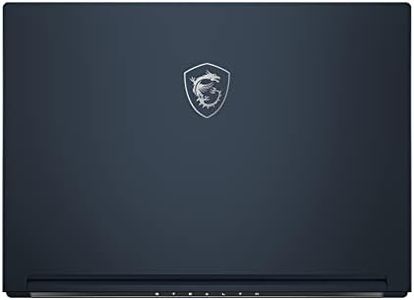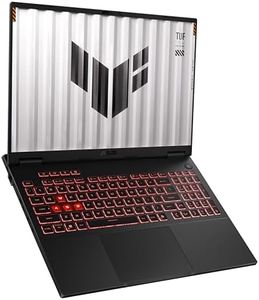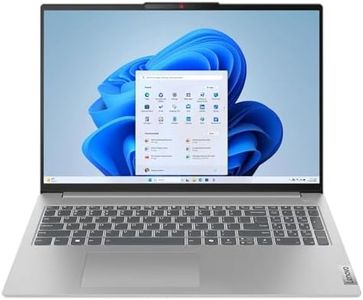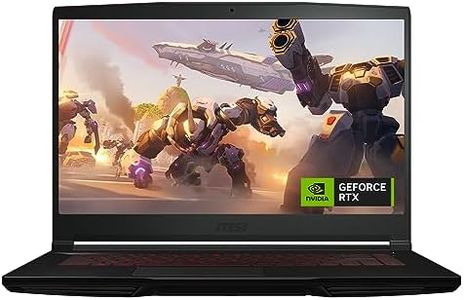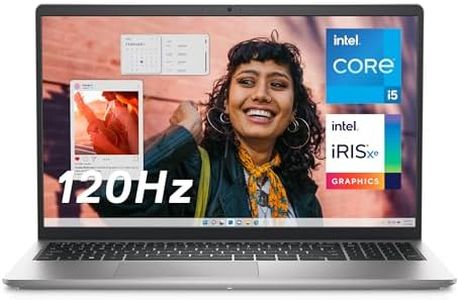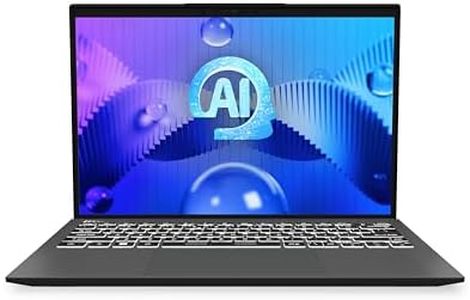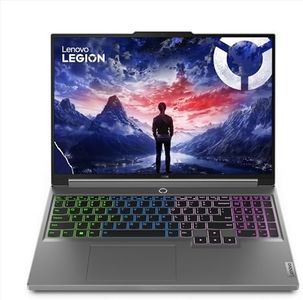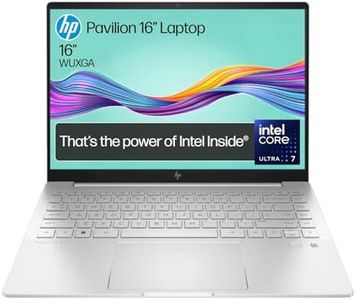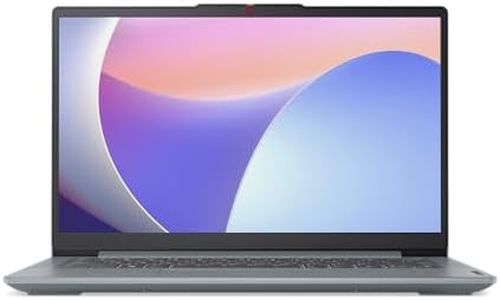We Use CookiesWe use cookies to enhance the security, performance,
functionality and for analytical and promotional activities. By continuing to browse this site you
are agreeing to our privacy policy
10 Best Graphic Design Laptops
From leading brands and best sellers available on the web.Buying Guide for the Best Graphic Design Laptops
When choosing a laptop for graphic design, it’s important to focus on the features that directly impact your work experience and the quality of your projects. A laptop for graphic design should be able to handle heavy software smoothly, display colors accurately, and last through long sessions while remaining portable enough for your lifestyle. Start by listing your most-used graphic design tasks and their demands. Then, compare laptops using the key specs below to find the one that matches both your workload and working style.Display Quality (Resolution and Panel Type)The display is crucial for graphic design because it’s your main interface for seeing your work. High resolution means you see more detail, which is important when working with fine graphics. Full HD (1920x1080) is acceptable for basic work, but designers may benefit more from higher resolutions like 2K, 3K, or 4K, which provide sharper images and more screen workspace. Panel type also matters—IPS panels generally offer better color accuracy and wider viewing angles than basic TN panels, making them a better choice for design. If your work demands precise colors (like branding or print design), prioritize higher resolution and IPS or similar panels. If you mainly do web graphics or social media posts, a lower resolution may suffice.
Color Accuracy (Color Gamut Coverage)Color accuracy refers to how precisely the screen displays colors, which is especially important in graphic design. Color gamut coverage—the percentage of color spaces like sRGB or Adobe RGB that the display can show—tells you how many colors you can expect to see. Basic displays might only cover most of sRGB; better ones cover nearly all sRGB or even much of Adobe RGB or DCI-P3. For print design or professional digital graphics, prioritize wide color coverage, especially if your projects are color-sensitive. For personal or hobby projects where exact colors aren’t critical, you can compromise a bit on this spec.
Processor (CPU)The processor is the ‘brain’ of your laptop and determines how smoothly it can run graphic design programs, especially when you’re multitasking or working on high-resolution images. CPU performance is typically measured by its number of cores and clock speed. Entry-level CPUs (2-4 cores) can be fine for light tasks or vector-based design, while mid-range (4-6 cores) handle photo editing and light 3D work well. High-end CPUs (6-8+ cores) are best for multitasking, complex raster work, and video projects. If you switch between demanding programs or often handle large files, choose a more powerful CPU.
Memory (RAM)RAM is your laptop’s short-term memory, used for juggling multiple tasks at once. Too little RAM forces your laptop to slow down, especially when running programs like Photoshop or Illustrator. 8GB of RAM can suffice for basic graphic design, but 16GB is more comfortable for larger files or heavy multitasking. For complex workflows or frequent use of multiple design apps at once, 32GB or more can help. Match your RAM to the size and number of projects you typically handle.
Graphics Card (GPU)The graphics card helps with rendering images and accelerating tasks in many design programs. Integrated graphics (built into the processor) are fine for simpler graphic design, while dedicated GPUs (separate chips) provide better performance for 3D work, complex effects, or video editing. If you mostly do 2D design, a basic GPU is fine. If your work involves animation, video, or 3D models, prioritize a more powerful, dedicated GPU.
Storage Type and SizeStorage affects both how much you can keep on your laptop and how fast it starts up or opens large files. SSDs (solid-state drives) are much faster than HDDs (hard disk drives), making your software snappier and saving you time. For project files and programs, 512GB is a comfortable minimum for graphic design, with 1TB or more preferred if you keep a lot of large files locally. If storage needs are minimal or you use external drives/cloud, you can go lower, but always aim for an SSD over an HDD.
Portability (Weight and Battery Life)Portability is about how easy it is to move your laptop around and work away from your desk. Lightweight laptops (under 1.5-2kg) are easier to carry; heavier ones can be more powerful but less portable. Battery life is critical if you work in cafes or on the go; some high-performance laptops trade battery for speed. Decide how much you’ll travel with your laptop. If you work mainly at a desk, weight and battery life are less critical. If you move a lot, prioritize light weight and long battery life.
Connectivity (Ports and Wireless)Connectivity covers the types and number of ports (for USB, SD cards, external monitors, etc.) as well as wireless capabilities like WiFi. Designers often use external displays, tablets, or cameras, so make sure you have enough and the right kinds of ports. Thunderbolt or USB-C ports offer flexibility and fast transfer. If you rely on certain devices or accessories, check that the laptop supports them easily.
Keyboard and Touchpad ComfortAs a graphic designer, you’ll spend a lot of time typing and using your touchpad or an external mouse. A comfortable, responsive keyboard and precise touchpad help avoid fatigue during long sessions. Test for comfortable layout, good key travel, and a smooth, accurate touchpad. If you do a lot of shortcut-heavy work, keyboard quality is even more important.

